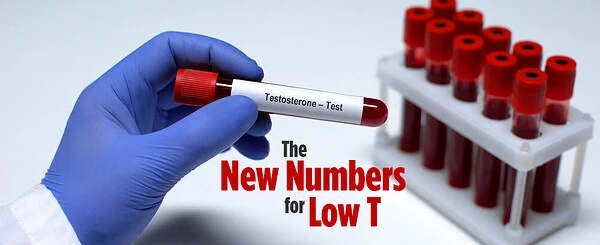Reassessment of Testosterone Deficiency Threshold for Younger Men and Alternative Solutions
If you are experiencing symptoms characteristic of low testosterone (low T), yet your physician refrains from prescribing testosterone, this article is a must - read.
I. The Dilemma of Younger Men (Aged 20 - 44)
A significant number of men within the 20 - 44 age bracket are grappling with health issues. They face difficulties in muscle building, while simultaneously having a predisposition to weight gain. Additionally, they report a decline in libido, persistent fatigue, and mood swings ranging from irritability to depression. These are all classic manifestations of low T.
A. The First Hurdle: Prescription Refusal
When these younger individuals consult a doctor and have their testosterone levels measured, they may be denied testosterone replacement therapy (TRT). The reason lies in the fact that their serum testosterone levels have not dropped below 300 ng/dL. Since the 1980s, this has been the established cutoff value.
B. The Second Flaw: Inappropriate Threshold
The 300 ng/dL cutoff for testosterone deficiency was derived from population studies that included a substantial number of older men. This threshold is ill - suited for younger men, who typically have higher normative T levels. In fact, their testosterone levels may be low relative to their age group.
II. A 2022 Study Challenging the Status Quo
A. Study Overview
A 2022 study took a commonsense approach to challenge the 300 ng/dL threshold. The study involved nearly 1500 men to re - evaluate the commonly used 300 ng/dL cutoff for defining testosterone deficiency in men aged 20 - 44 years.
B. Key Findings
Testosterone levels among the men in the study ranged from 236 to 716 ng/dL, with only a minor percentage at the extreme ends. The median value was 409 ng/dL.
Overweight men exhibited the lowest T levels.
Black men had higher average T levels compared to white or Hispanic men.
Age - specific testosterone ranges were as follows:
20 - 24 years old: 409 - 558 ng/dL
25 - 29 years old: 413 - 575 ng/dL
30 - 34 years old: 359 - 498 ng/dL
35 - 39 years old: 352 - 478 ng/dL
40 - 44 years old: 350 - 473 ng/dL
The researchers concluded that the 300 ng/dL threshold is too low for younger men.
III. Implications for You
If you are between 20 and 44 years old and are experiencing symptoms of low T, it is crucial to inform your doctor of these new findings. For instance, a 29 - year - old man with a testosterone level of 395 ng/dL would be denied TRT based on the current 300 ng/dL cutoff. However, according to this study, this level could be considered low for his age range.
A. Alternative Options
If your doctor is reluctant to adjust the treatment plan or you are not ready for injectable TRT, consider using a natural testosterone booster such as Longjack (also known as Eurycoma or Tongkat Ali). Researchers have identified it as a safe and promising therapeutic option for men with low T. Its efficacy is sufficient to serve as an alternative to doctor - prescribed TRT.
B. Mechanisms of Longjack
Longjack boosts testosterone through three primary mechanisms:
It blocks the aromatization of testosterone into estrogen, thereby facilitating testosterone synthesis.
It stimulates testosterone production in the Leydig cells of the testicles.
It reduces the production of sex - hormone - binding globulin (SHBG). SHBG binds to testosterone, rendering it inactive, so by lowering SHBG production, more natural testosterone is made available.
C. Product Recommendations
It is advisable to use the patented LJ100 variety. A high - dosage formulation with Labrasol, a delivery technology adopted from the pharmaceutical industry to enhance bioavailability, is also recommended. Omega - Man High Absorption Longjack (available on Amazon) contains an effective dosage (300 mg) of LJ100 and utilizes Labrasol. The recommended intake is one softgel per day.
D. Additional Benefits
Longjack does not cause testicular shrinkage or prostate enlargement. Moreover, it appears to have aphrodisiac properties.
IV. Reference
Zhu, Alex, et al. "What Is a Normal Testosterone Level for Young Men? Rethinking the 300 ng/dL Cutoff for Testosterone Deficiency in Men 20 - 44 Years Old." The Journal of Urology, vol. 208, no. 6, Dec. 2022.
Testosterone Levels: Challenging the 300 ng/dL Cutoff
•
Author: Flint
•
fitness
sport
life

Share this article
